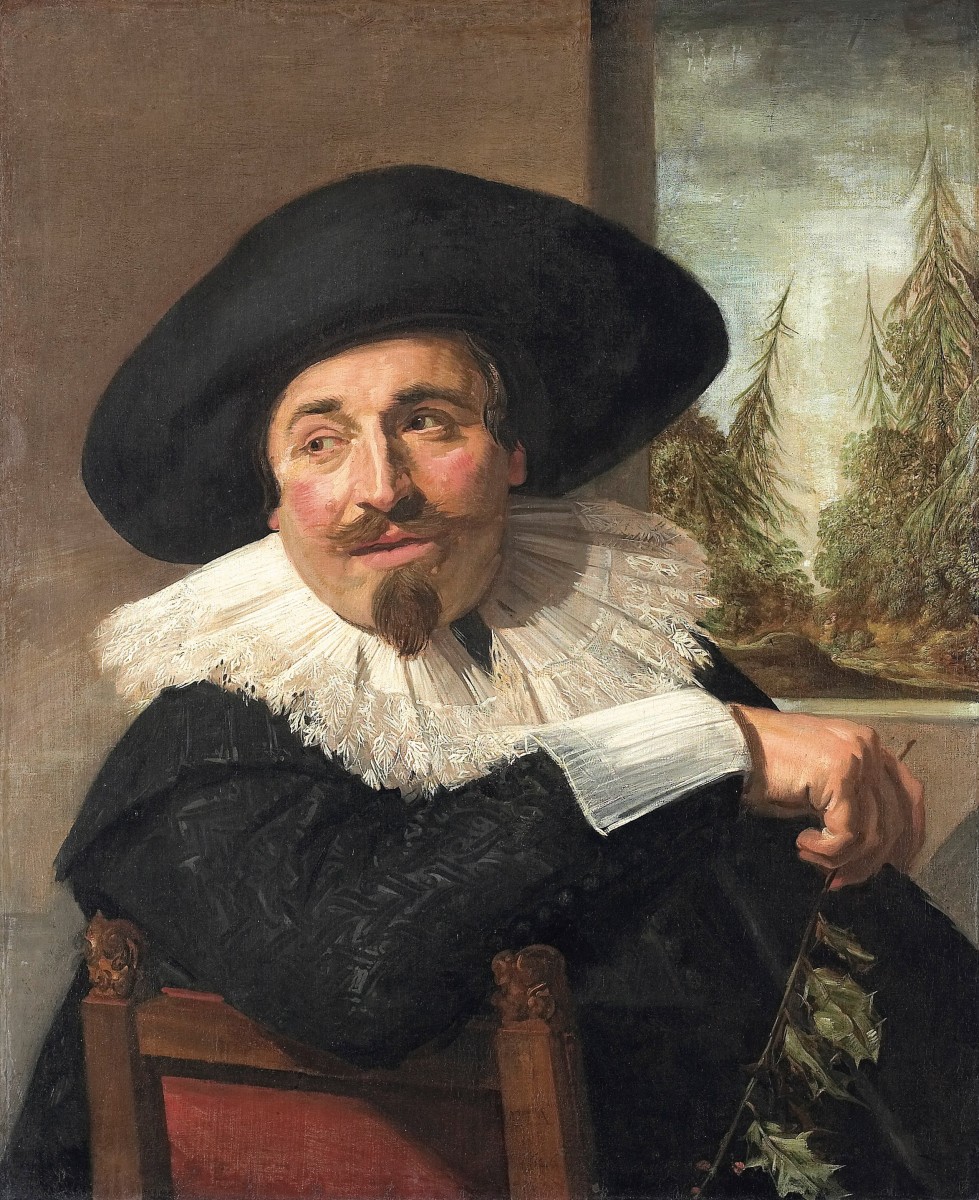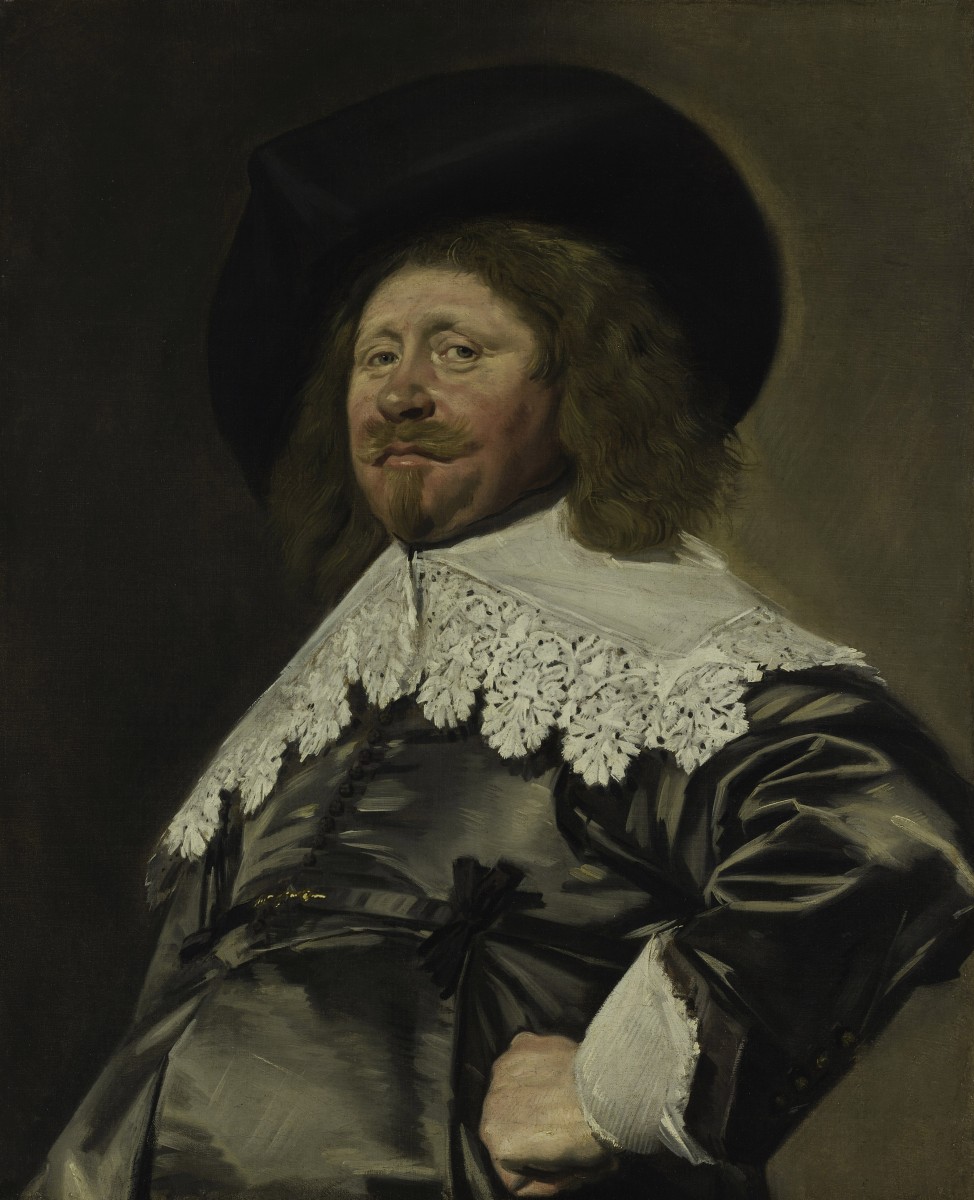Of Hals and men
A familiar face heads to a reunion in London, England as The Wallace Collection presents Frans Hals: The Male Portrait.

Frans Hals. Isaac Abrahamsz. Massa, 1626. Bequest of Frank P. Wood, 1955. © Art Gallery of Ontario.
Famous in his own time for creating portraits so lifelike, so relaxed, that they ‘live and breathe’, Frans Hals (c.1582/3-1666) was one of the greatest painters of the Dutch Golden Age. His reputation was bolstered in 1865, when the 4th Marquess of Hertford, one of the main founders of The Wallace Collection, sensationally outbid Baron James de Rothschild at an auction in Paris, paying more than six times the estimate for Hals’ mirthful portrait, The Laughing Cavalier (1624).
Fast forward to 2021 and Hals' pre-eminence amongst European portrait artists is again in the news. Since September, the beloved painting by Hals that is part of the AGO Collection, Portrait of Isaak Abrahamsz. Massa (1626), has been on view as part of the celebrated exhibition Frans Hals: The Male Portrait at The Wallace Collection. Curated by Dr. Lelia Packer, The Wallace Collection’s curator of Dutch, Italian, Spanish, German and pre-1600 Paintings, the exhibition has brought together 13 portraits from across Europe and North America to rave reviews from audiences and critics alike.
We caught up with her to find out more about what this imposing collection of gentlemen reveals about Hals.
AGOinsider: Your exhibition covers several decades of Frans Hals’s career. The portrait from the AGO Collection was painted at the beginning of this trajectory, in 1626. What can we learn by looking at his development over time?
Dr. Packer: The AGO’s wonderful portrait of Isaac Massa is, indeed, a relatively early work by Hals who began painting around 1610 when he was 28 years old. This is a rather late start for an artist of that time and it may be that there are earlier paintings by Hals out there that have yet to be discovered. Hals continued to paint, mainly portraits, for the rest of his life, until his death in 1666 at age 84. By bringing together 13 male portraits from across his career in this exhibition we can trace Hals’s evolution as a painter and as a portraitist. As time passed, Hals’s handling of paint got looser and broader and his palette grew darker and increasingly monochromatic. There are, of course, exceptions to the rule, as Hals adapted his painting style to his specific patrons who came to him with their own particular preferences and requirements.
AGOinsider: The portrait of Isaac Abrahamsz. Massa shows its subject seated on a red chair, with a lush forest scene just outside a window. Many of the other paintings in the exhibition have less detailed background. Why was it important to show Massa with his arboreal window?
Dr. Packer: We are extremely grateful to the Art Gallery of Ontario for lending this fantastic portrait. The opening onto a landscape is unique in the portraits in the exhibition and in Hals’s individual portraits more generally. Hals favoured plain backgrounds for his portraits. The inclusion of a verdant forest must have been a condition of the commission that Hals and Massa, who were friends, agreed upon. Massa travelled widely and had spent many years in Russia. He was the first European to write an account of Siberia and was also a cartographer in his own right. It may be that the landscape in the portrait is an allusion to Massa’s extensive travels. The landscape may have been painted by a specialist landscape painter rather than by Hals, making this the only individual portrait that Hals produced in collaboration with another artist.
AGOinsider: The Male Portrait is a sort of ‘boys’ club’. What sorts of gender-specific spaces did Hals inhabit in his lifetime? Was he very social, and did he have close male friends?
Dr. Packer: We don’t know a great deal about Hals’s life. His only known formal artistic training was with the painter, art theorist and biographer Karel van Mander sometime before 1603. Artistic training back then would have been all male and Hals’s teacher and fellow pupils would have been men. Hals joined Haarlem’s painter’s guild in 1610, again, another predominantly male organisation. From 1612 to 1624, he served in the St George civic guard in Haarlem, an all-male militia group that, by Hals’s time, was more social than martial. Hals married twice and had a total of twelve surviving children. Several of his sons became painters and likely trained in their father’s workshop.
AGOinsider: On a similar theme: did any of the subjects of the portraits in the show know each other in their lifetimes?
Dr. Packer: Massa and Hals were friends. Massa served as witness at the baptism of one of Hals’s daughters. The same goes for Pieter van den Broecke, whom Hals portrayed in the picture from Kenwood House. Van den Broecke was also a witness at another baptism of one of Hals’s children. Hals’s familiarity with these sitters is certainly imparted in his portraits of them. Both Massa and Van den Broecke are represented in a casual and relaxed way, and there seems to be a familiarity between the painter and his subject.
AGOinsider: New ideas often coalesce when works are united. Did you learn anything surprising when you installed these wonderful portraits?
Dr. Packer: It has been absolutely wonderful to see The Wallace Collection’s Laughing Cavalier in the company of friends for the first time since it was acquired by the 4th Marquess of Hertford, one of the founders of the Wallace Collection, in 1865. Seeing this iconic painting alongside other individual portraits of men by Hals has really helped contextualise it. Like Massa, The Laughing Cavalier, painted in 1624, is a relatively early work. It stands out in the intricacy of the sitter’s costume, the embroidery of which is unique in Hals’s oeuvre and in Dutch portraiture more generally. Together, the portraits in the show—wealthy men at the height of fashion—enable us to trace the evolution of menswear in the seventeenth century as well as the fashion for longer and longer hair. What is more, the last exhibition on Frans Hals in the UK was over three decades ago. The public and press here have been extremely positive to rediscover Hals and to situate him among the great Dutch masters of the Golden Age, Rembrandt and Vermeer.
Frans Hals: The Male Portrait continues at The Wallace Collection until January 30, 2022. For more news about art and culture from Toronto and around the world, be sure to subscribe to the AGOinsider.



